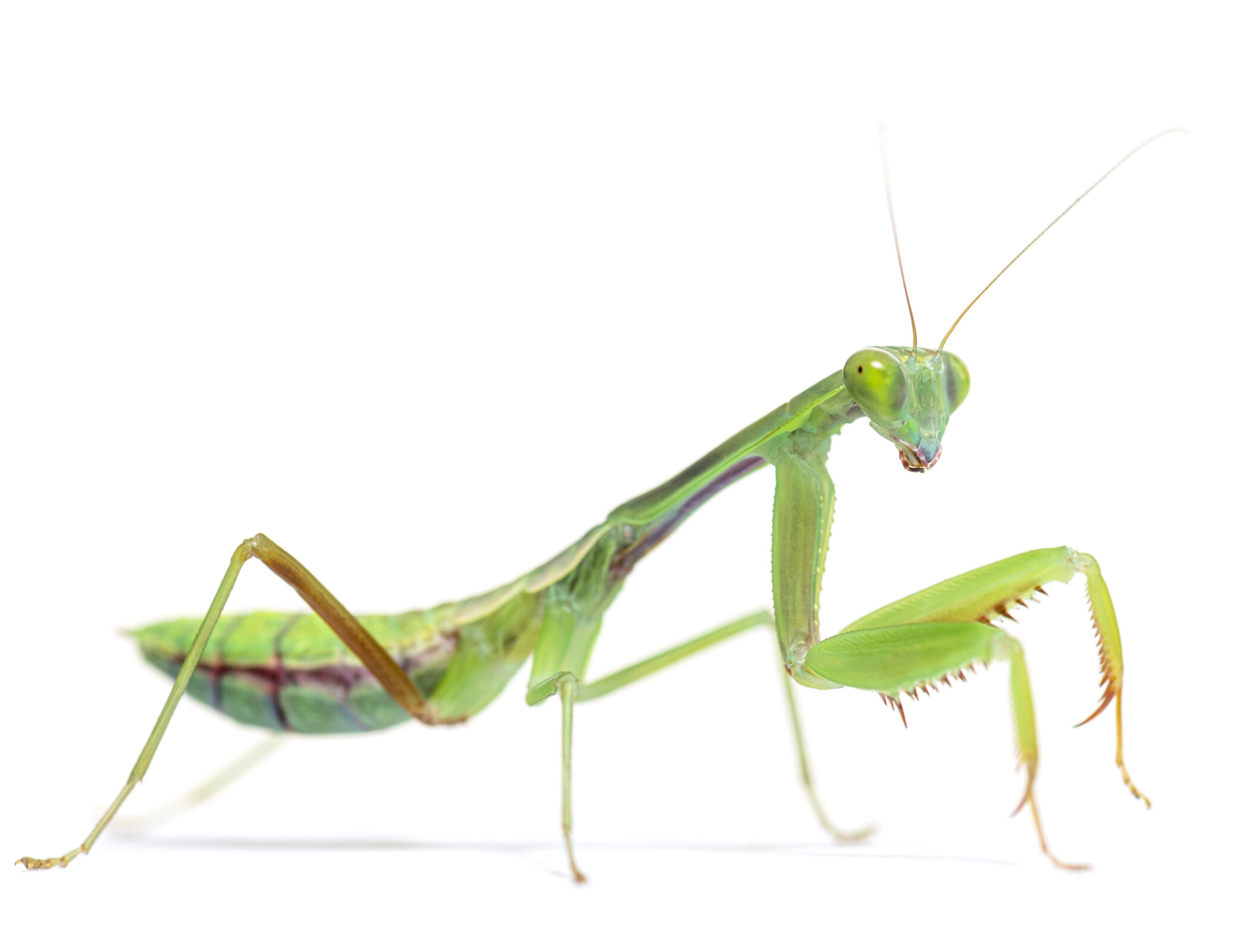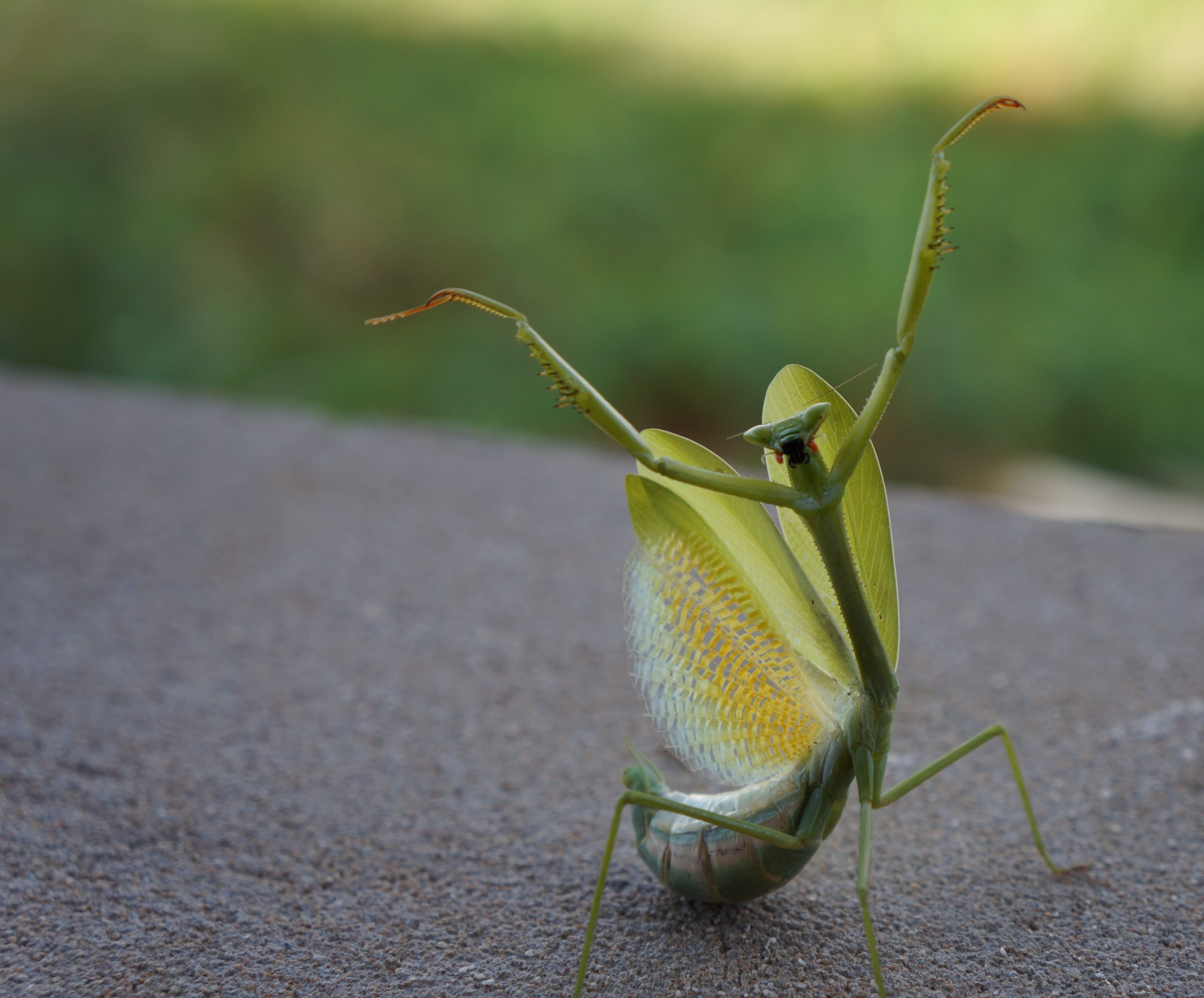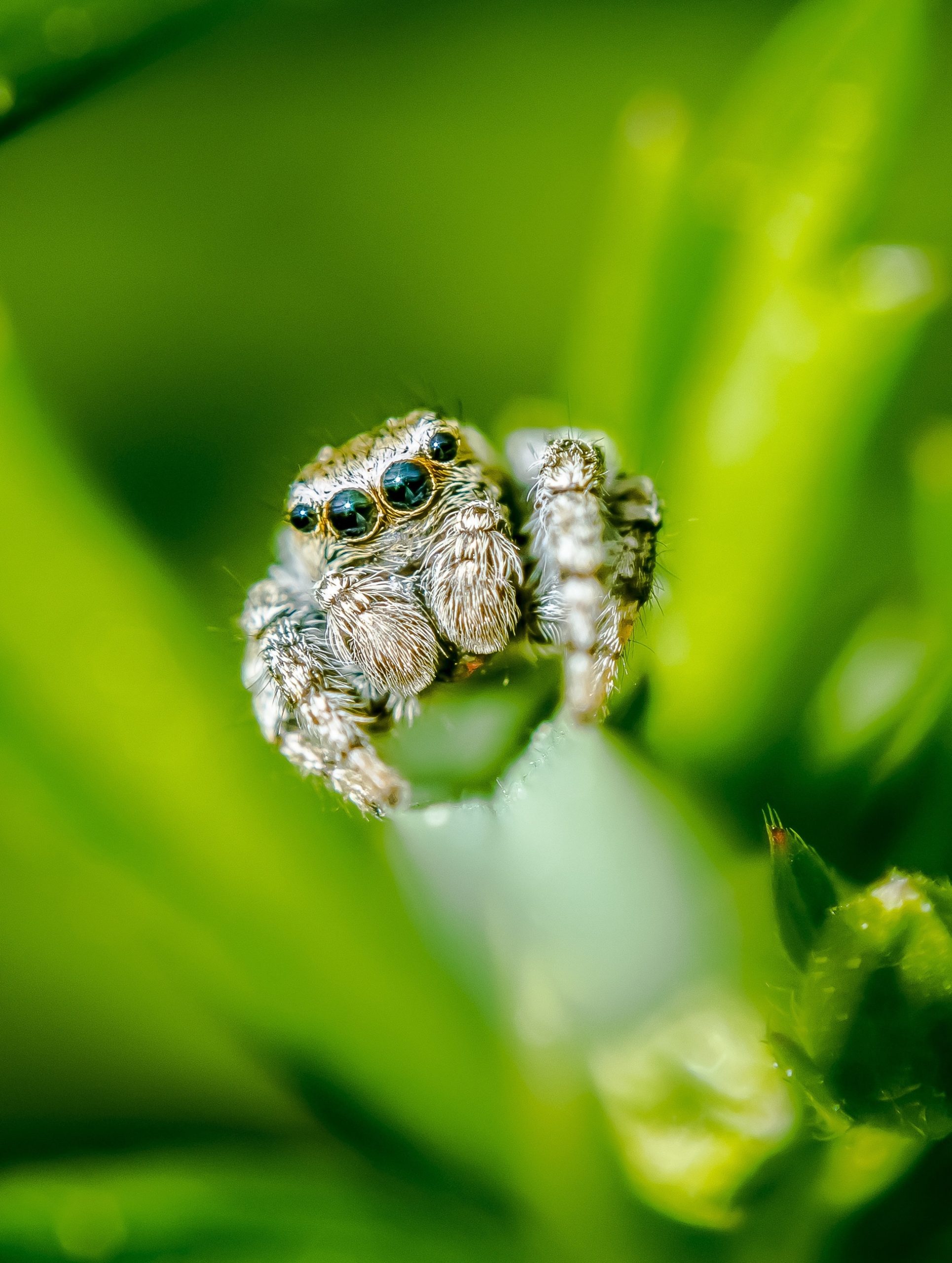
praying mantis

At Avonturia de Vogelkelder you will always discover an extensive choice of praying mantis. From the colored Hymenopas Coronatus, the unique Dragon mantis to the recognizable Hierodula Membranacea, our shop in The Hague offers a variety of praying mantises for lovers of these intriguing insects.
However, keeping praying mantises requires specific considerations depending on the species. Creating a suitable habitat is essential and should be tailored to the needs of the praying mantis. Whether you are a novice enthusiast or an experienced mantis keeper, we have the knowledge and articles to help you on your way. Visit our shop in The Hague and discover the wonderful world of praying mantises!

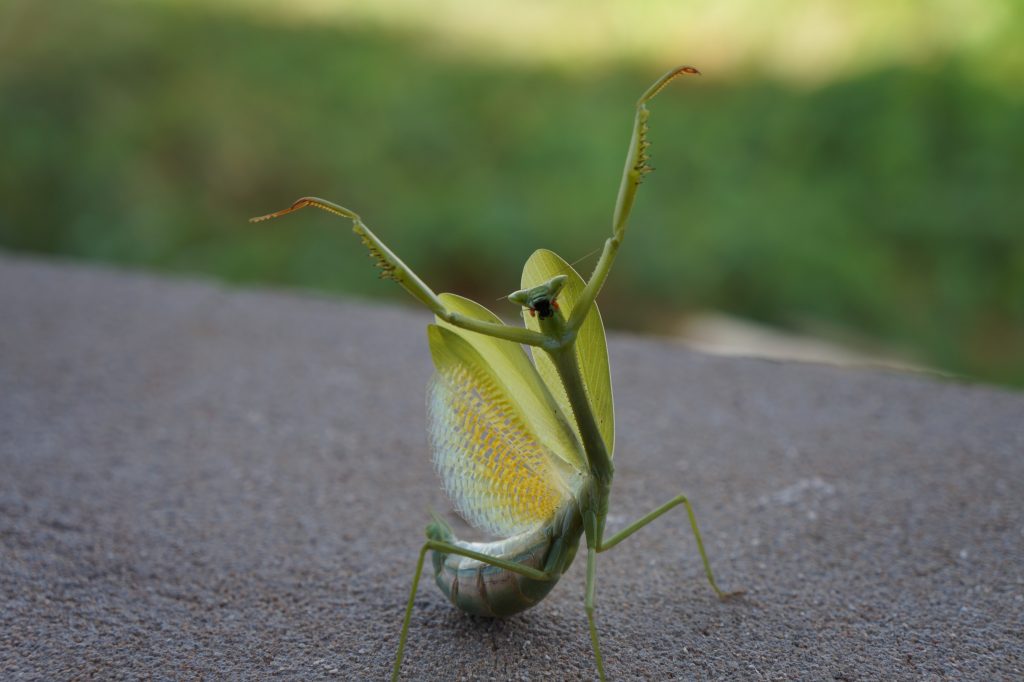
What are Praying Mantises?
Praying mantises are insects belonging to the family Mantidae, within the order Mantodea. They are recognizable by their distinctive prayer posture, raising their front legs, which is what gave them their name. These fascinating creatures have a unique appearance and behavior that make them among the most intriguing of insects.
Praying mantises have an elongated body with three parts: the cephalothorax, the abdomen (abdomen) and the long, thin neck (prothorax). They have large, compound eyes and a very flexible neck that allows them to turn their head 180 degrees, which gives them almost 360-degree vision.



The forelimbs of praying mantises are extraordinarily developed and serve as deadly grabs for capturing prey. Equipped with sharp thorns, these legs can strike with incredible speed when they detect prey. Praying mantises are known for their effective hunting techniques and agility at catching other insects, such as flies, moths and even the tiniest crickets.
There are over 2.400 known species of praying mantis around the world and they can be found worldwide in warmer regions from tropical to desert regions. Praying mantises vary greatly in size, color and behavior. Some species are only a few centimeters tall, while others can grow up to 15 cm. Each species has evolved unique adaptations depending on their environment and prey.
Praying mantises are also known for their striking camouflage skills. Some species mimic leaves, branches or flowers to hide from predators and prey. Their ability to disguise themselves in their environment makes them highly successful predators and excellent survivors.
Overall, mantises are fascinating and diverse insects that play an important role in the ecological balance of their habitats. They continue to fascinate scientists and nature lovers because of their unique properties and behavior.




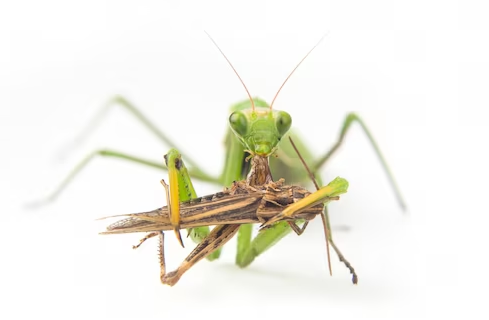
Nutrition
The diet of praying mantises consists mainly of other insects. As the predators of the insect world, they are notorious for their hunting skills and lightning fast attack techniques. They feed on a wide variety of prey, such as flies, moths, beetles, grasshoppers, and even other smaller mantises.
When prey enters their field of vision, they use their sharp front legs as grabbers to grab hold of their prey. Praying mantises are known for their stealthy behavior and their ability to disguise themselves, allowing them to easily approach their prey without being noticed. The success of their hunting techniques makes them highly efficient predators.


Keeping Praying Mantises
Praying mantises can be kept in a specially equipped terrarium or an insect enclosure that is tailored to their needs. It is important to create a suitable living environment to ensure that the mantis stay healthy and feel comfortable. Here are some important points to keep in mind when keeping mantises.
- A suitable insect terrarium
- The right temperature
- Ideal humidity
- Air ventilation
- Suitable soil
- Natural decor
- Food and Water
- Terrarium maintenance
It is important to know what species of mantis you have, as housing and feeding requirements can vary between different species. Always consult our expert reptile team for specific information on caring for your chosen mantis species. With proper care and attention, praying mantises can be a captivating addition to any insect lover's household.

Suitable Terrarium
Always opt for a special insect enclosure, in the form of an insect terrarium or an insectarium, then you can be sure that the enclosure is suitable for your praying mantis and prevent escape.
The terrarium should provide enough space for your praying mantis to move around, hunt and display their natural behaviors. In general, the larger the terrarium, the better, but a terrarium of about 20 x 20 x 30 cm is a good basic size for most species, something larger can also be 30 x 30 x 40 cm.
As a rule of thumb, we recommend that the mantis terrarium should be at least 3 times the height and the width about 2 times the length of your mantis. This means that if your Praying Mantis is, for example, 10 centimeters long, the terrarium should be at least 30 centimeters high and 20 centimeters wide.

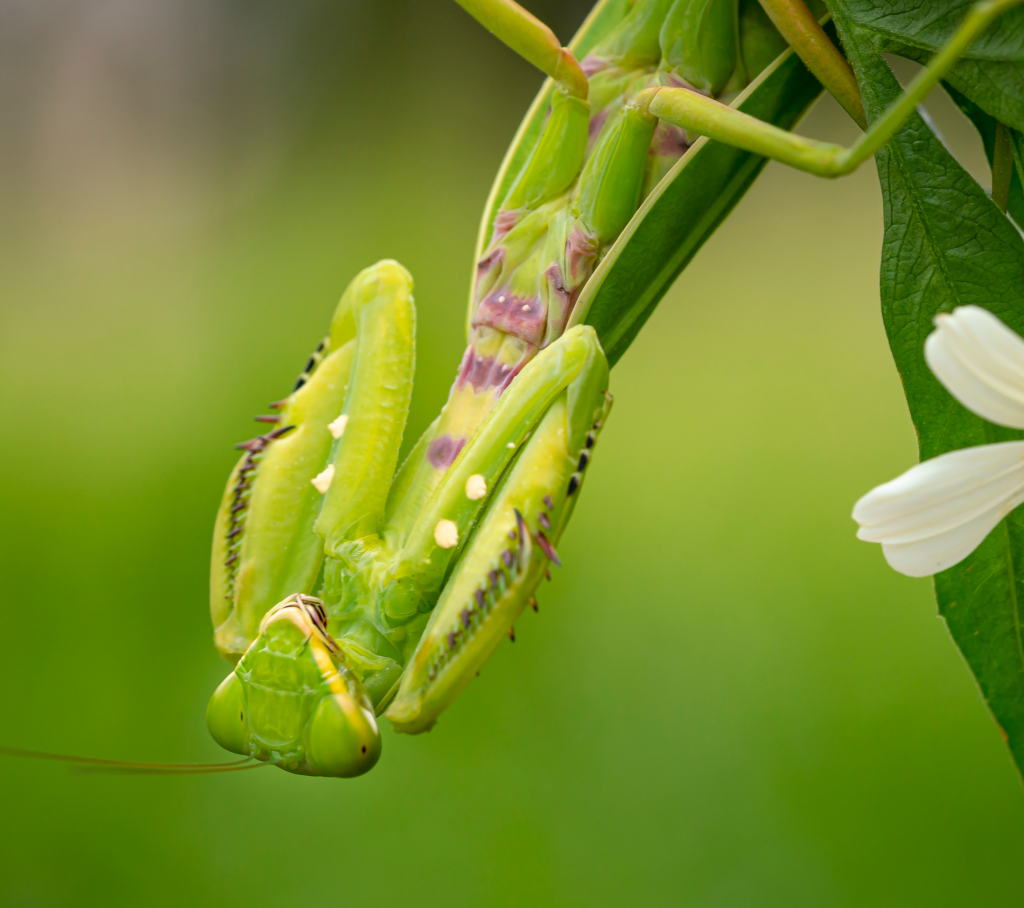
Interior nursery
When setting up your praying mantis terrarium, it is essential to create a suitable and comfortable living environment. If you take into account the natural needs and behaviors of your praying mantis and arrange your terrarium accordingly, it will feel comfortable and stay healthy.
Choose a suitable substrate such as humus or jungle bedding. The substrate not only provides a stable surface for your praying mantis, a solid base for your interior, but also helps to maintain the correct humidity in the terrarium.
Add natural items to the terrarium, such as wood, branches, tree bark, and plants. Praying mantises feel safer and less stressed if they can hide. These hiding places also mimic the natural environment of the praying mantis and give the terrarium a natural look.



Technique
Maintaining the correct temperature and humidity in the terrarium is critical to the well-being of your mantis. A heat lamp above the terrarium is an effective way to regulate the temperature. Our expert team can advise you on which heat lamp is suitable for your specific terrarium dimensions.
However, we do not recommend using a heat mat under the terrarium, as this can cause the substrate to dry out. If the soil dries out, conditions can become unfavorable for your praying mantis.
To maintain the correct humidity, we recommend regular spraying with a fine mist. By spraying the substrate and the hiding places, you ensure a suitable humidity in the terrarium. Praying mantises naturally occur in humid areas, so it is very important to maintain a suitable humidity level to avoid dehydration and stress.
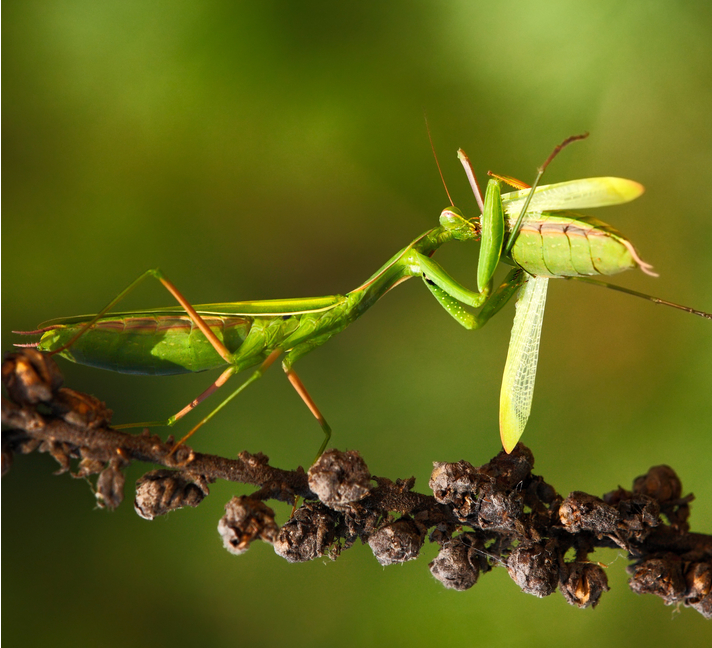
Why You Should Keep Praying Mantises Alone
Praying mantises are known for their cannibalistic behavior, which means they can attack and eat other mantises, especially if they are hungry or feel threatened. Because of this natural instinct, it is generally recommended that mantises should only be kept in a terrarium.
Keeping several praying mantises in one terrarium can lead to aggression and fighting, which can result in injury and even death of the weaker individuals. In addition, cannibalistic tendencies can cause stress and anxiety in the mantis, negatively affecting their well-being.



Molting in Praying Mantises
Molting is a crucial process in a praying mantis's life, shedding their old skin to make room for growth into their adult form. This stage plays an essential role in their growth and development, and young praying mantises undergo multiple molts as they grow to adulthood.
After about 2 to 3 weeks, praying mantises reach maturity, which can be recognized by their developed wings, a characteristic that only adult praying mantises have. Males typically molt about 6 to 8 times in their lifetime, while females molt 7 to 10 times, depending on the specific species. Each species has its own set number of molts.
During molting, they are very sensitive to external influences and are less able to defend themselves. To protect them during molting it is essential that we leave them alone and avoid any disturbances. A calm and safe environment is crucial to ensure that this delicate process can take place undisturbed.

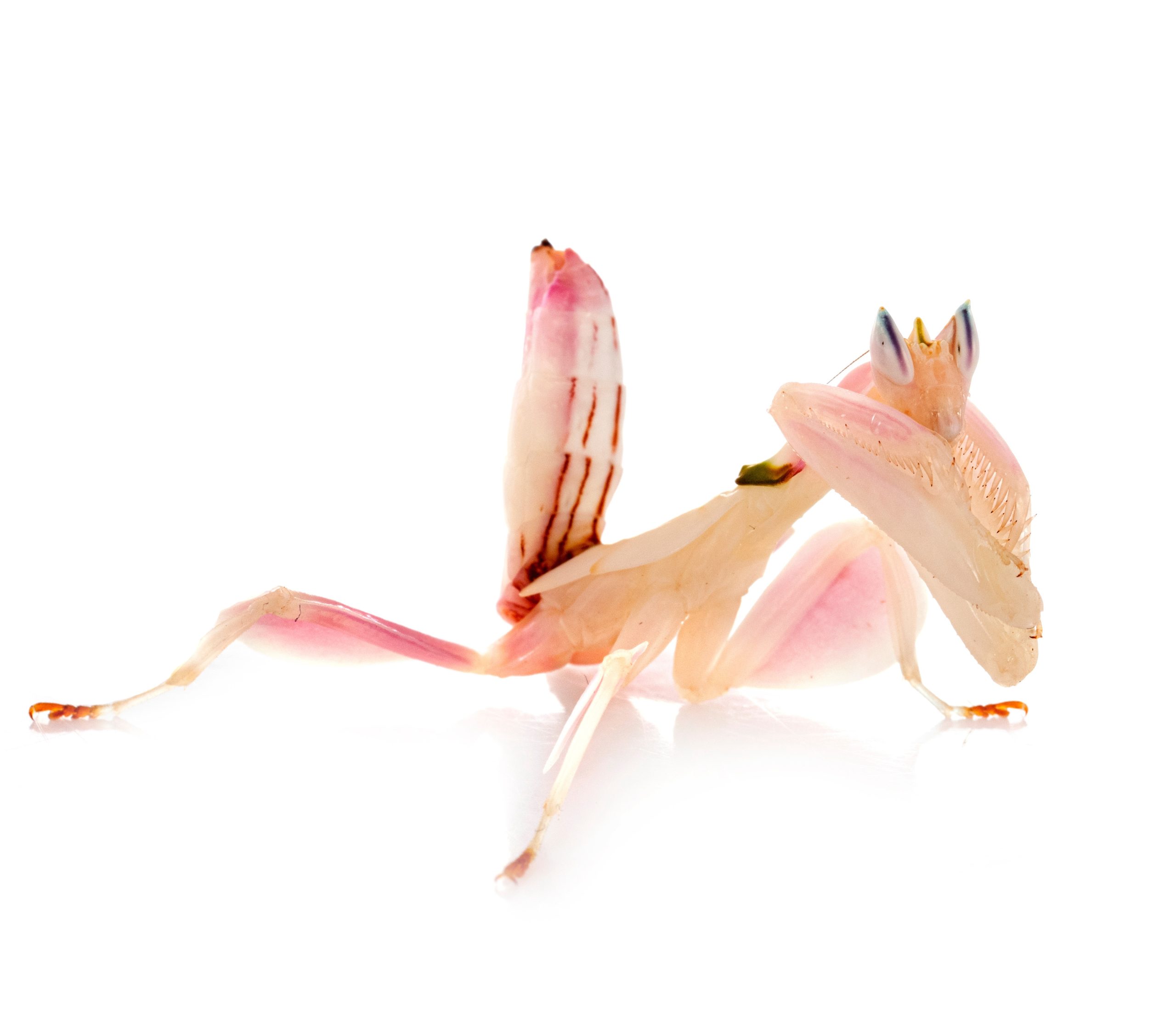
Reproduction
Reproduction in praying mantises is a fascinating and deadly process. When a female is ready to mate, she releases irresistible odorants, known as pheromones, from her abdomen. These odorants attract males, who then go in search of the female.
The male crawls on the female's back and connects his abdomen to the intestinal opening on the female's abdomen. In this way he transfers his seed packet, which the female then stores in her body. What is special is that the female can fertilize her eggs for life with just one seed packet
The female must eat enough food to obtain enough nutrients for laying her eggs. Interestingly, the male plays a crucial role in this! After or even during mating, most females eat the male.
This unique behavior is known as sexual cannibalism, but it has a surprising benefit to the male. Cannibalism increases its chance of reproduction and passing on its genes. While it's a sad ending for the male, it's a clever survival strategy that helps to successfully carry on his genetic legacy.



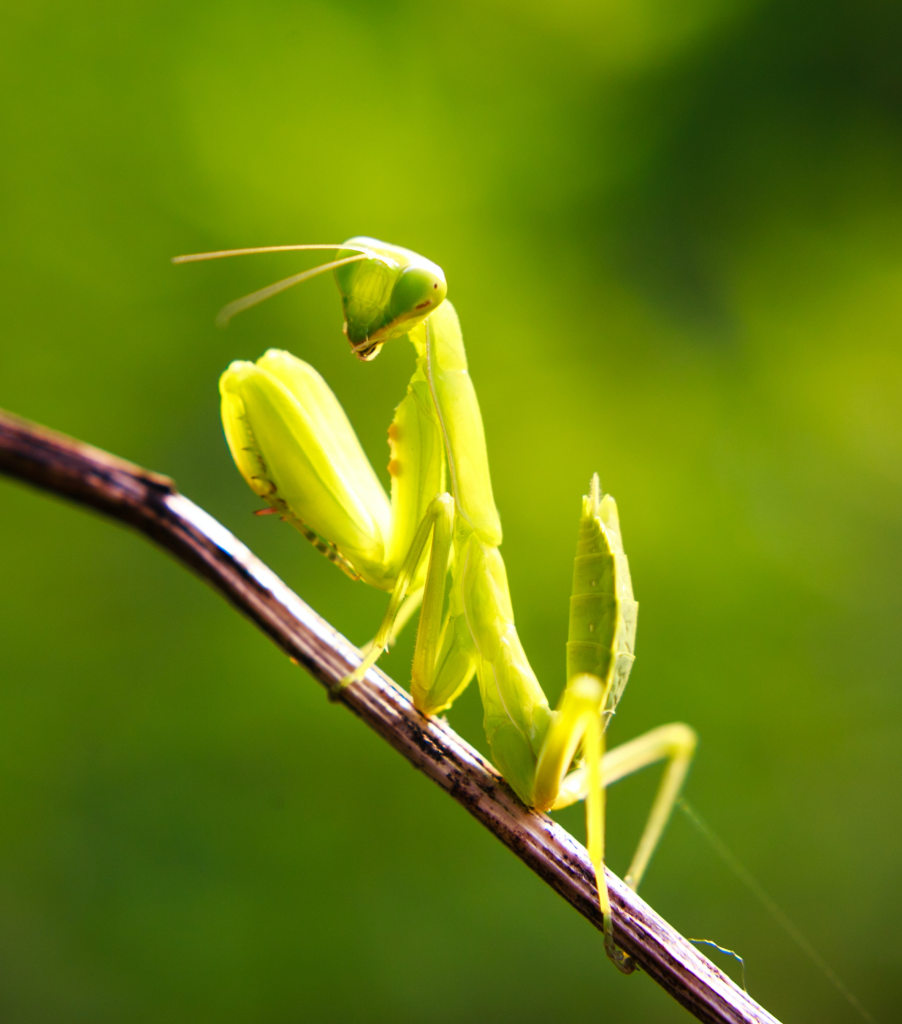
How old do praying mantises get?
The lifespan of praying mantises varies depending on the species and environmental conditions. In general, adult praying mantises have a shorter lifespan than many other insects. On average, praying mantises can live from a few weeks to 10 months.
Young praying mantises, also called nymphs, usually go through a 2 to 3 week development period before reaching adulthood. In general, males live for up to two months after reaching maturity, while females live an average of three to six months.


